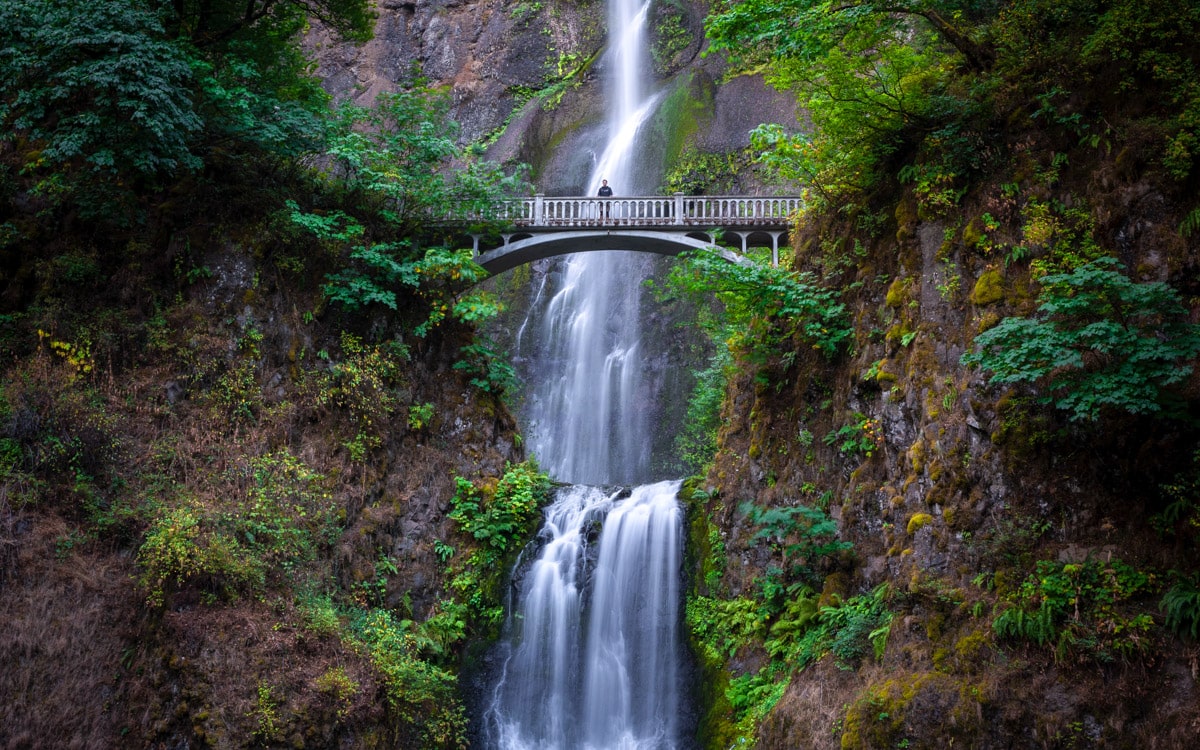
The Seven Wonders of Oregon are a collection of natural attractions and geographical wonders that showcase the diverse landscapes of Oregon. The list of iconic wonders includes coastal roads with sandy beaches, towering volcanic peaks with endless hiking options, state parks with some of the best rock climbing in the world, and river gorges with stunning vistas.
Travel Oregon created the list of the Seven Wonders of Oregon to promote tourism to the state. The goal of the campaign was to showcase the unique and diverse natural beauty of Oregon.
The best way to experience the Seven Wonders of Oregon is by exploring them for yourself. Drive along that road on the Oregon Coast, hike around Smith Rock State Park, or explore waterfalls in the Columbia River Gorge.
Whether you visit one of the wonders on the list or all of them, you will always remember the experience. With that said, these are the Seven Wonders of Oregon:
Table of Contents
1 – Crater Lake
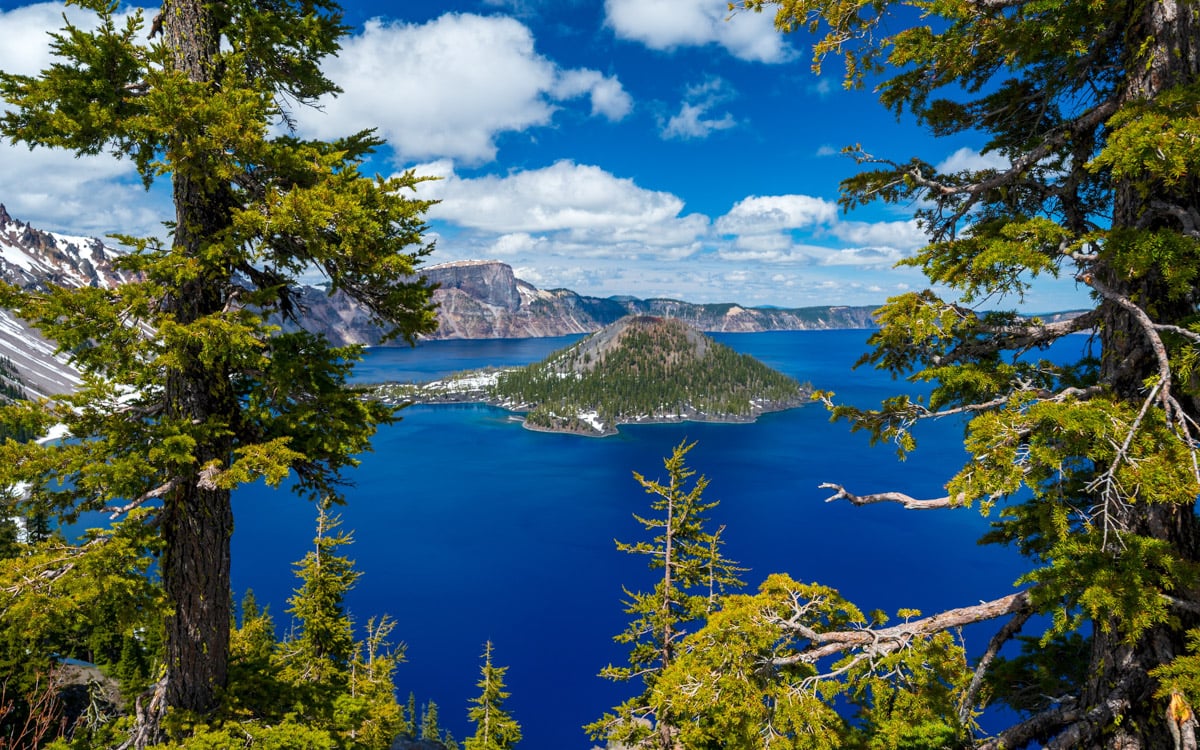
Crater Lake is a volcanic crater lake located in south-central Oregon, about 80 miles northeast of Medford in Klamath County. The lake, the highlight of Crater Lake National Park, is well known for its scenic views, vivid blue color, clear water, and towering cliffs.
The lake sits in a 2,148-foot-deep (654 meters) caldera that formed around 7,700 years ago when Mount Mazama collapsed. With a depth of 1,949 feet (594 meters), Crater Lake is the deepest lake in the United States and the ninth-deepest in the world.
The lake features two islands. On the west end of the lake is Wizard Island, a volcanic cinder cone. On the southeast end of the lake is Phantom Ship, a small island formed from andesite rock. During the summer, the islands are accessible by boat tours.
2 – Columbia River Gorge
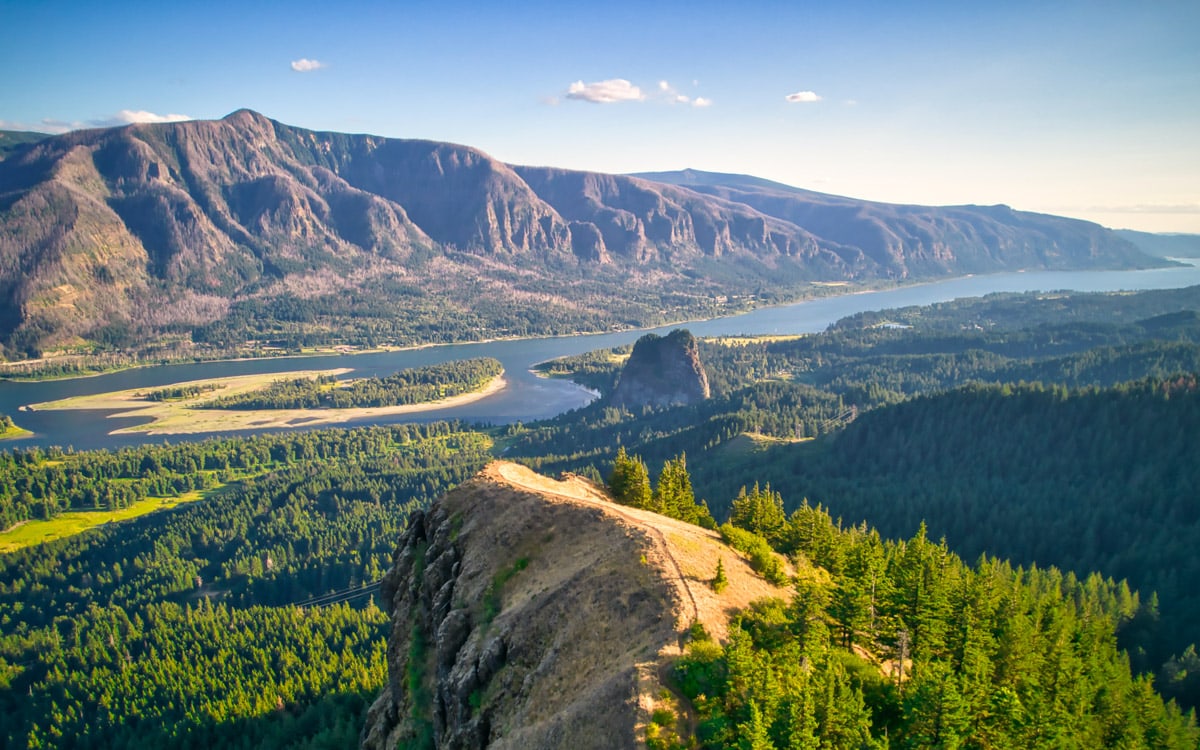
The Columbia River Gorge, located only 30 miles from Portland, is a deep river canyon carved by the Columbia River. The gorge, which winds through the Cascade Range, stretches for 80 miles, forming the boundary between Oregon and Washington.
One of the best ways to explore the gorge is by driving along Interstate 84. As the scenery changes from rainforest to grasslands, you will pass by viewpoints, historic landmarks, small towns, and famous waterfalls such as Multnomah Falls.
In 1986, the Columbia River Gorge was designated as a National Scenic Area. While the scenery is spectacular, the area is also famous for activities including hiking, mountain biking, fishing, boating, and water sports.
3 – Oregon Coast
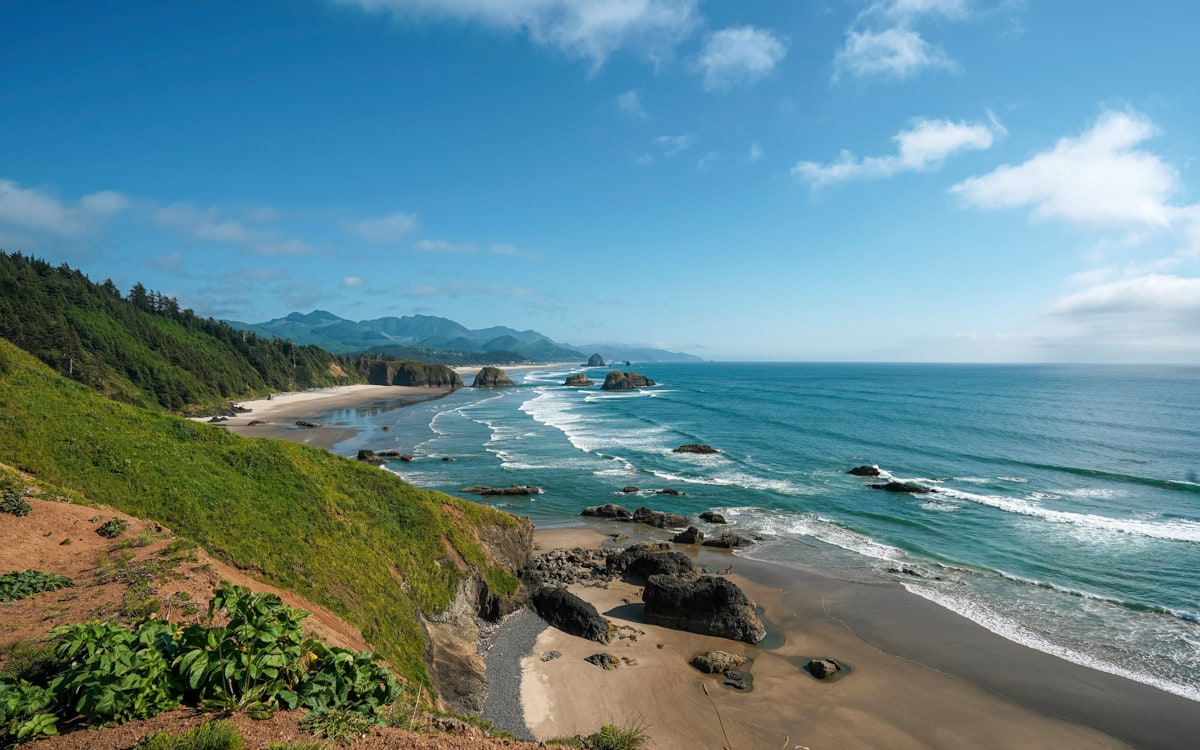
The Oregon Coast is a coastal region that stretches along the western border of Oregon from the California state line in the south to the Columbia River in the north. Along the 363 mile coastline, which hugs the Pacific Ocean, are pristine beaches, rocky cliffs, sea stacks, charming coastal towns, and striking landscapes.
The Oregon Coast has three sections: North Coast, Central Coast, and South Coast. The North Coast features long stretches of sandy beaches. Many sea cliffs, bays, and terraces, along with small towns, are found on the Central Coast. The South Coast is mountainous with sea cliffs along with miles of beaches.
The best way to experience the Oregon Coast is by driving along Highway 101, also known as Pacific Coast Highway. Driving along the coast allows visitors the opportunity to experience the diverse landscapes of the Oregon Coast. Whether you are a photographer, a nature lover, or an outdoor enthusiast, you will find natural sights, coastal towns, state parks, and attractions to explore.
4 – Mount Hood
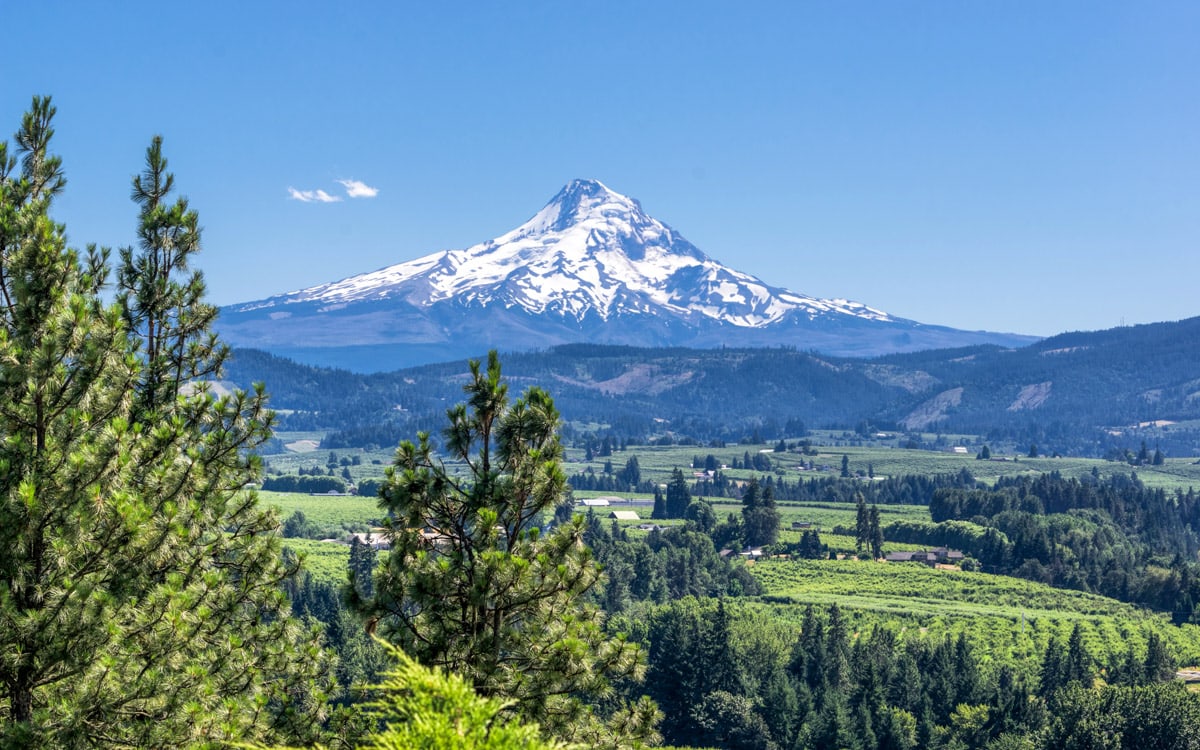
Mount Hood is an active stratovolcano located in the Cascade Volcanic Arc. At 11,249 feet (3,428 meters), Mount Hood is the tallest mountain in Oregon and the fourth tallest in the Cascade Range.
The peak of Mount Hood, an iconic and prominent landmark in Oregon, is visible up to 100 miles away. On a clear day, the snow-packed peak of the mountain, located 50 miles to the east, can be seen from downtown Portland.
The area surrounding the mountain is home to about 1,000 miles of trails, making it a popular destination for hikers. One of the most well-known trails is the Timberline Trail, which at 40.7 miles, circumnavigates the entire mountain. Besides hiking, Mount Hood attracts over 10,000 climbers each year who attempt to ascend the mountain.
5 – Smith Rock State Park
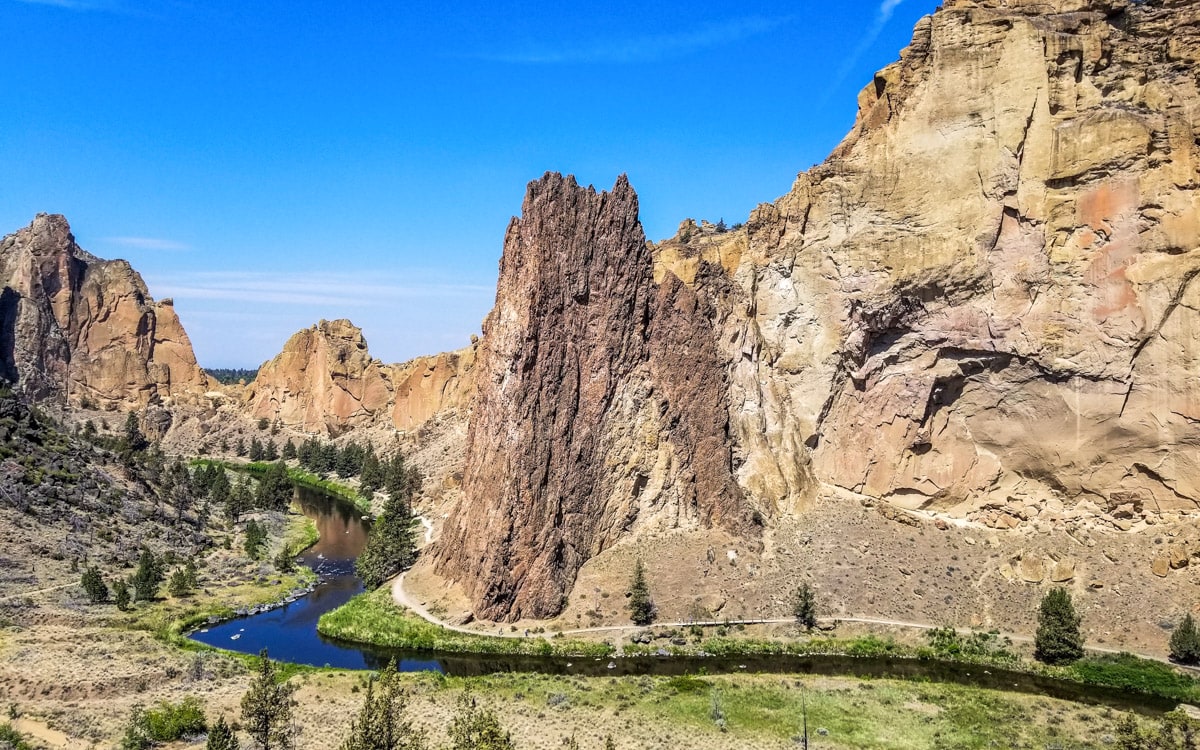
Smith Rock State Park is a popular outdoor destination in Central Oregon. Although the park is well known for its recreational activities, the highlight of the park might be its river canyons and towering tuff and basalt cliffs.
With its sheer cliffs and cutting-edge climbing routes, Smith Rock is widely acknowledged as the birthplace of modern American sport climbing. Rock climbers of various skill levels are drawn to the park for its wide range of options including traditional climbing, sport climbing, multi-pitch climbing, and bouldering.
Besides rock climbing and its stunning landscape, Smith Rock State Park is popular for hiking, camping, photography, and its diverse range of wildlife.
6 – Painted Hills
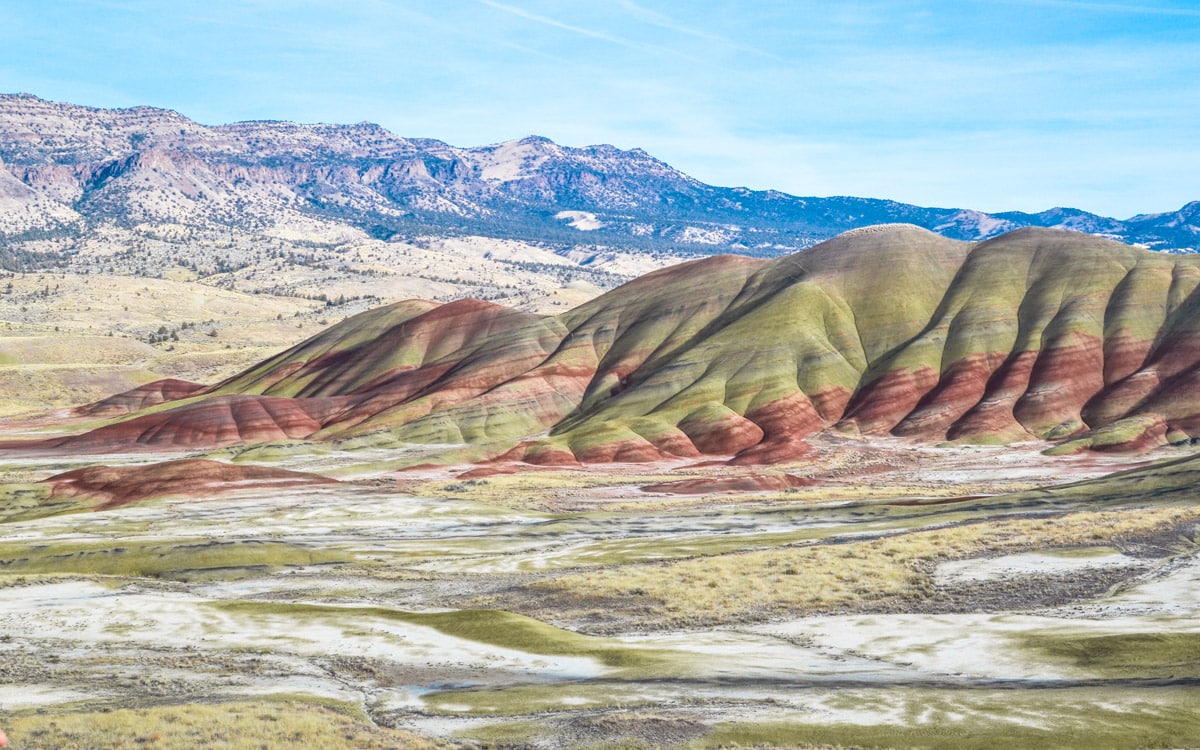
The Painted Hills is a geologic site in Wheeler County in central Oregon. Along with Sheep Rock and Clarno, the Painted Hills is part of the John Day Fossil Beds National Monument.
The Painted Hills formed 35 million years ago when ash and pumice settled in the area after volcanic eruptions in the Cascade Mountains. Over time, natural processes led to the oxidation of the ash. Eventually, the ash turned into soil and claystone layers of various red, black, gold, and yellow hues.
Today, the Painted Hills is open year-round for recreation. The area features well-maintained trails and viewing points for visitors to enjoy the landscape while preserving the fragile environment.
7 – The Wallowas
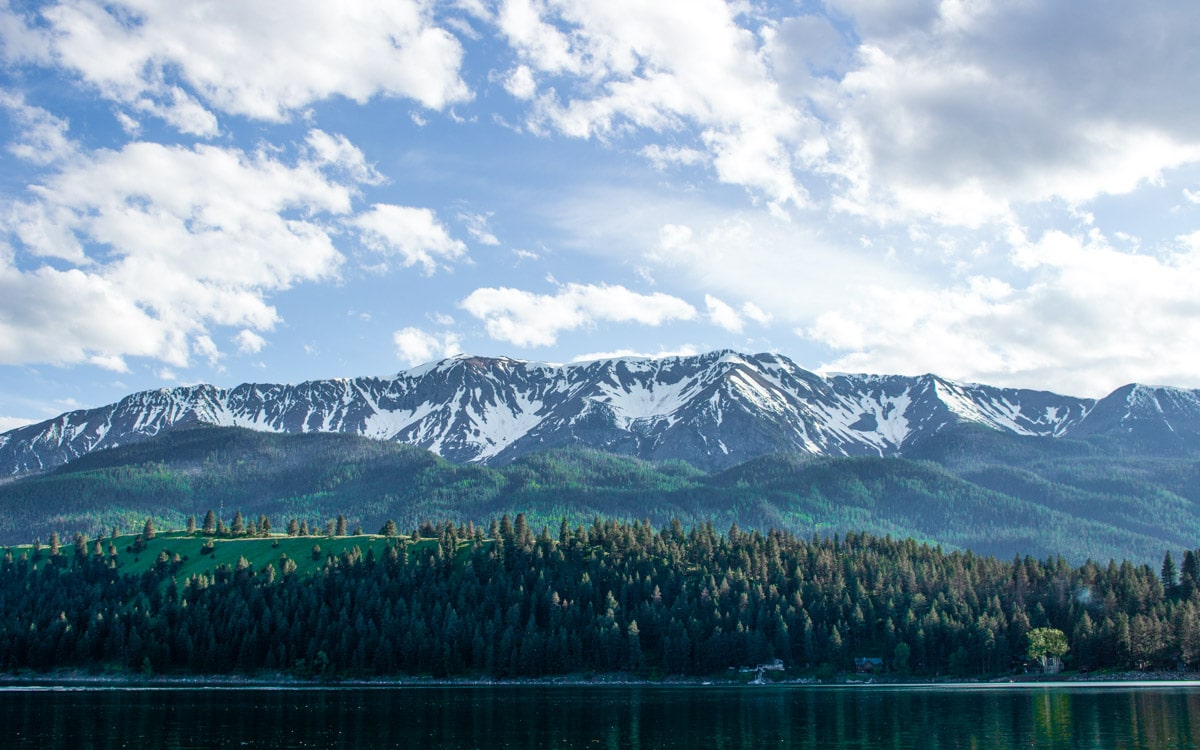
The final spot on the Seven Wonders of Oregon list goes to The Wallowas. The Wallowas, also known as the Wallowa Mountains or the Alps of Oregon, is a stunning mountainous region in the northeastern part of the state.
Due to its remote location, The Wallowas remains a lesser-known destination compared to some of Oregon’s more popular attractions on this list. The hidden gem offers breathtaking landscapes and remote wilderness to those seeking tranquility and unspoiled natural beauty.
Taking the time to visit The Wallowas rewards you with alpine meadows, pristine lakes, rugged peaks, and deep valleys. If you enjoy camping, hiking, or backpacking, The Wallowas is an excellent choice. In winter, visitors can partake in activities such as cross-country skiing and snowshoeing under snow-capped mountains.
Bonus – Mount Jefferson
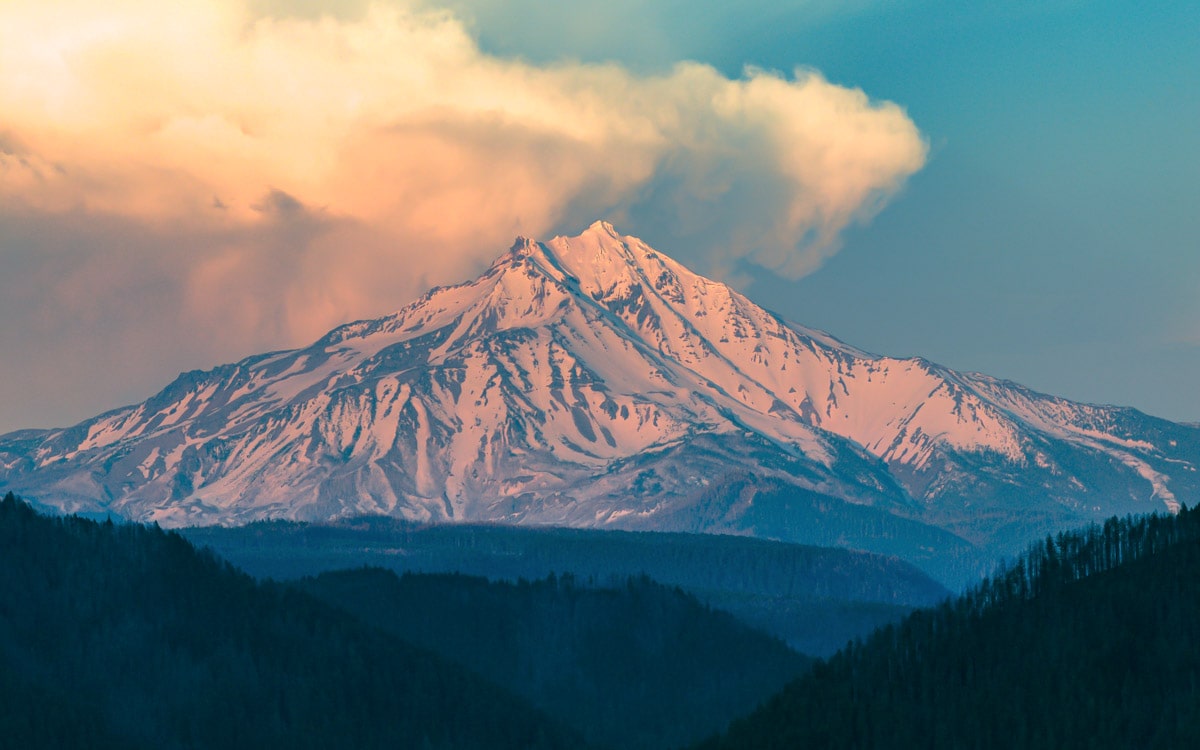
While not officially on the list of Seven Wonders of Oregon, I decided to add Mount Jefferson as a bonus entry. The mountain, also known as Seekseekqua by Native Americans, is located in the Cascade Volcanic Arc of the Cascade Range. At 10,495 feet, Mount Jefferson is the second tallest mountain in Oregon.
Named after President Thomas Jefferson, Mount Jefferson is a stratovolcano that has erupted many times over the last 300,000 years. The last eruption is believed to have occurred about 15,000 years ago. Smaller events, including lava flows and mud flows, have also occurred over the millennia.
Due to its location and ruggedness, Mount Jefferson is one of the most difficult mountains to reach in the Cascades. Despite that, the mountain is a popular destination for hiking, photography, backpacking, and mountaineering.
Seven Wonders of Oregon Map
Last Updated on February 12, 2024
Related Posts